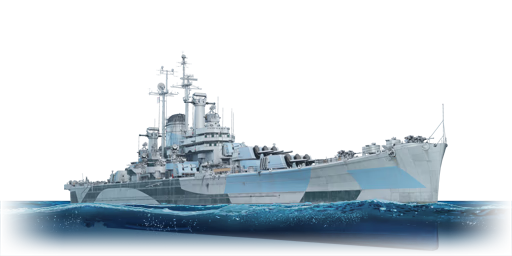The USS Des Moines is the lead ship of her class of three heavy cruisers, laid down in late May 1945 shortly before the end of World War 2. Derived from the earlier Baltimore-class heavy cruisers, she was the first ship in the US Navy to utilize autoloading 8-inch guns. She would not see combat, only being commissioned in 1948, with a short service life of only 13 years, being decommissioned in 1961. Notably, she did serve as the flagship of the Mediterranean fleet for 7 of those years, and as the control center for American armed forces in the Lebanon crisis of 1958.
Introduced in Update "Sky Guardians" but was removed from the Gaijin store after the War Thunder 11th Anniversary sale. The USS Des Moines is in an earlier refit compared to her sister ship USS Newport News but has a much stronger anti-aircraft battery: increased from two double 3-inch autocannon mounts on the USS Newport News to a whopping 12 double mounts, plus an additional twelve double 20 mm mounts. This means that in addition to her impressive anti-ship capabilities with a 6-second reload for her main battery, she can also serve as a protective screen for battleships and less protected cruisers against air attack.










 2 x (450 / 600) %
2 x (450 / 600) % 
 2 x 196 %
2 x 196 % 
